A few months ago, I spent some time reprocessing panoramas that I took years ago. These were the standard panoramas based on standing in one place and rotating the camera with overlap on each frame. I showed some of them to a friend here in town. He responded that he was scanning some of his Hasselblad XPan negatives. Would I like to use the camera? What? There is an Xpan cameras in my little town and I can use it? You know my response! In 2004, I rented an XPan when I was working in Seattle, so I had some familiarity with the concept, but I barely had time to experiment with it.
The XPan (and the identical Fuji TX-1) were innovative rangefinder cameras that used regular 35 mm film to create a negative that was 24×65 mm in size rather than the usual 24×36 mm frame common in most 35mm cameras. My friend not only had a XPan (Version 1) but also the three lenses and their correct center filters! These consist of the 30mm ƒ/5.6 super wide lens, the 45mm ƒ/4 (the lens that I think was most commonly used with XPans), and the 90mm ƒ/4 short telephoto. The 30mm came with a special viewfinder that fit in the flash shoe and even incorporated a bubble level. The 58mm center filter (now an unobtanium item) evens the exposure across the field.
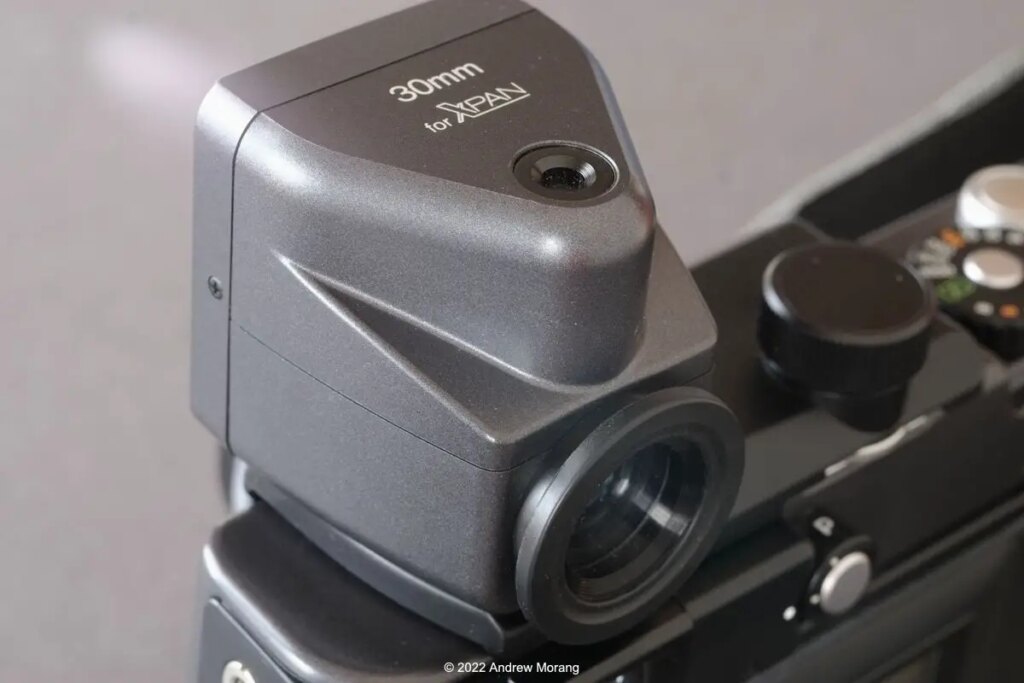
Wide negatives need some special handling if you intend to scan them. I wrote about some options in an XPan article in my blog, Urban Decay. In my case, I scan two separate 24×36 mm sections with a Plustek 7600i film scanner and merge the two with Photoshop CS5 or CS6.
I first tried a roll of Tri-X film, then some Kodak Portra 160, and finally some Fuji Acros. I wandered around town (Vicksburg, Mississippi), north into the Mississippi Delta, and west across the river into Louisiana.
In this article, I want to show examples exclusively from the 30mm ƒ/5.6 lens. This is an amazing optic but also a challenge to use. I quickly realized that it shines when you are right in the subject, in effect, surrounded by it. The standard landscape has too much foreground unless it includes some unusually interesting features or you are specifically showing an expanse of something (or nothing) that surrounds your subject.
Vicksburg
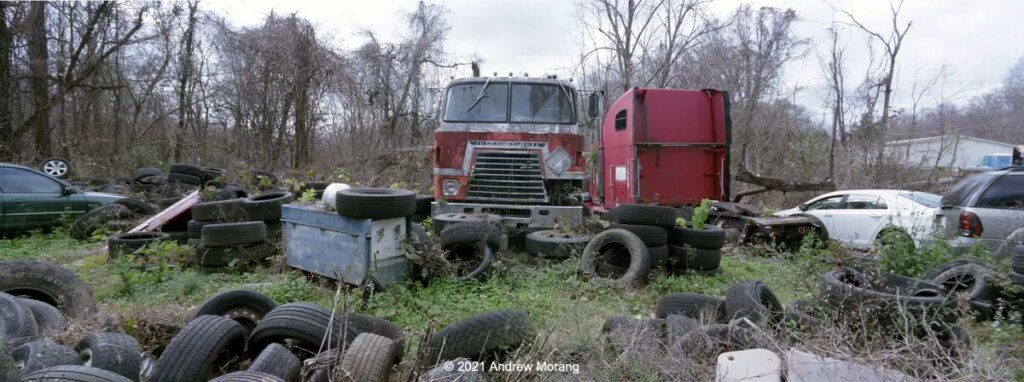
Long term 35MMC readers may have seen this junk yard before. I can’t resist recording the debris that we create and casually discard in our society.
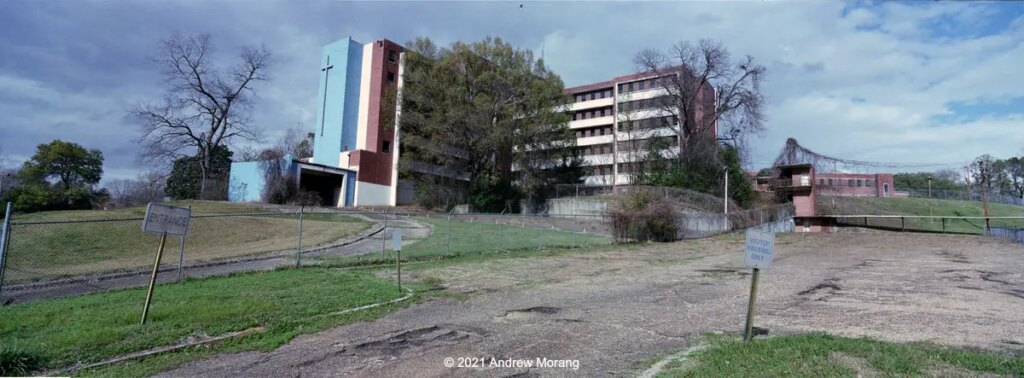
The former Sisters of Mercy Hospital, built in 1959, sits forlorn on a hill in Vicksburg. The building is unused and suffers from black mold, vandalism, leaks, and looting. I doubt that it will ever be usable again. I specifically included the broken pavement to show the overall scene. The building is semi-secured, but homeless people periodically break in. I would love to photograph inside.
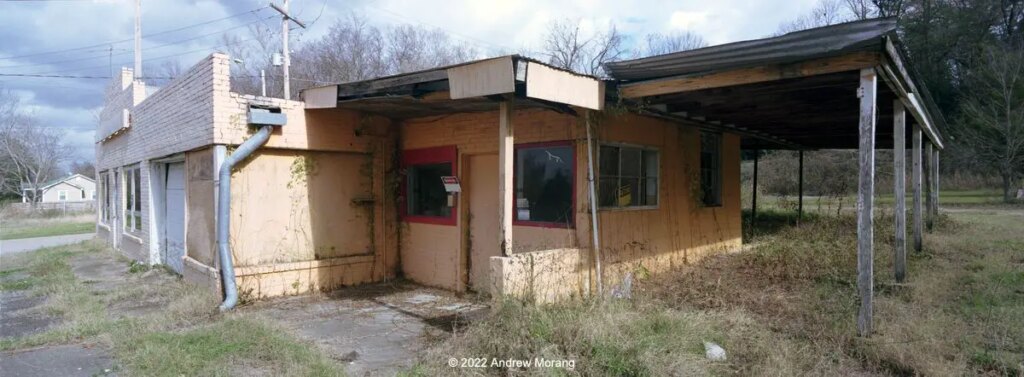
I do not recall this store ever being in business.
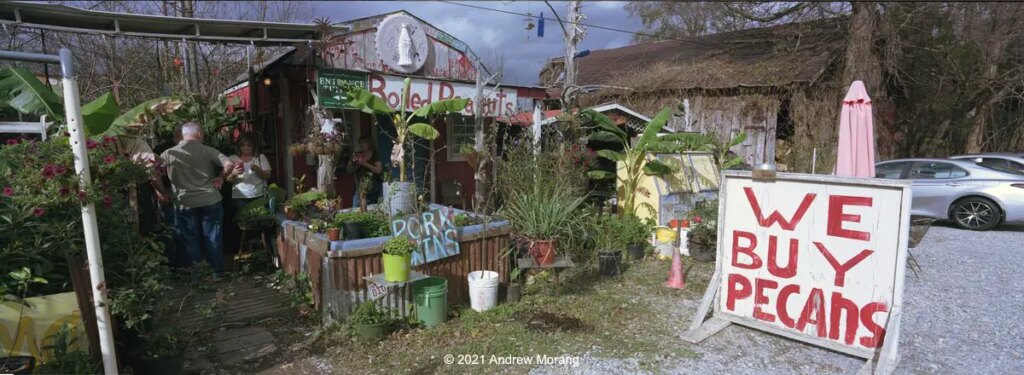
The Tomato Place is a popular lunch spot south of town. You can buy fresh produce, cookies, bread, and local honey, as well. I have photographed in the Tomato Place before.
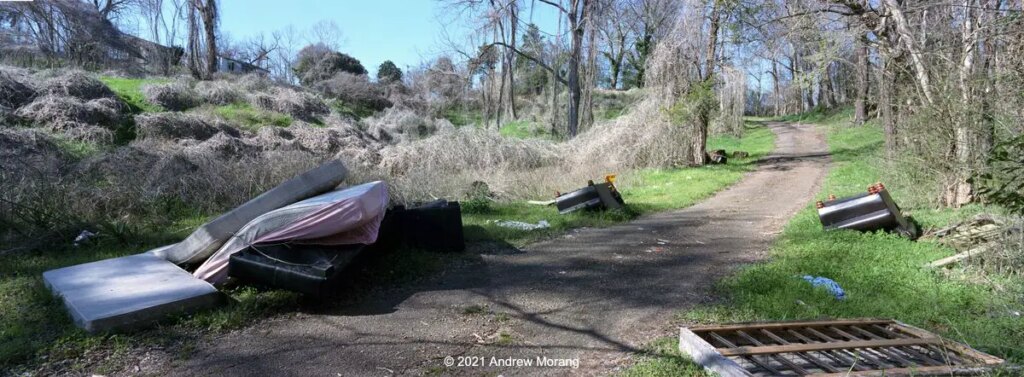
Sycamore Lane is one of Vicksburg’s many semi-hidden roads. Decades ago it was lined with houses, but now most are gone except for the two up on the bluff. I photographed Sycamore Avenue in 2021 in the snow using the long-discontinued Kodak Verichrome Pan film.
Jackson
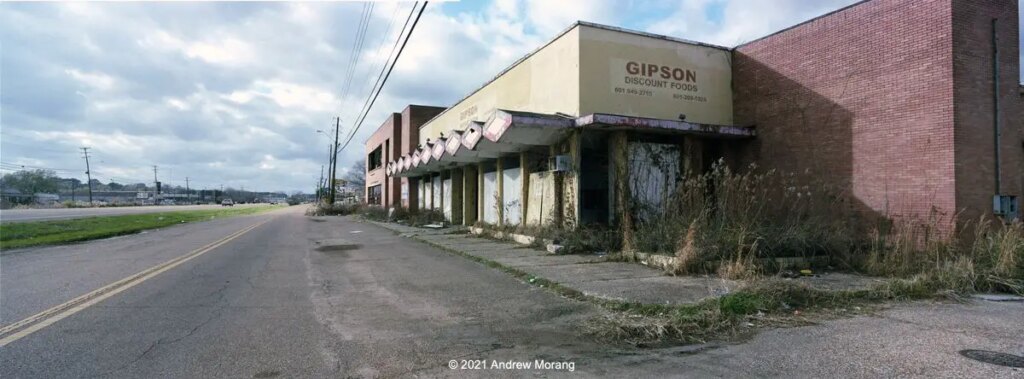
The former Gipson Discount Foods is an example of the type of abandoned warehouses that you see along highway US 80 in west Jackson. It has some elements of post-war moderne decoration, possibly not too bad when new. US 80 in the post-WWII era was major commercial artery with factories, restaurants, hotels, and motels. Today it is rough. Traffic buzzes past empty warehouses and factories. Motels look like dives. Payday Loan shops occupy strip malls.
Route US 80 was one of our earliest all-weather paved cross-country auto roads. Much of the present 80 was once part of the Dixie Overland Highway, a southern route stretching from the Atlantic to the Pacific coasts. Today, 80 ends in Dallas, with the sections further west absorbed into various interstate highways or local roads. One day, I intend to drive the remnants all the way to San Diego, photographing old towns en route and stopping in Roswell, New Mexico, to see some UFOs.
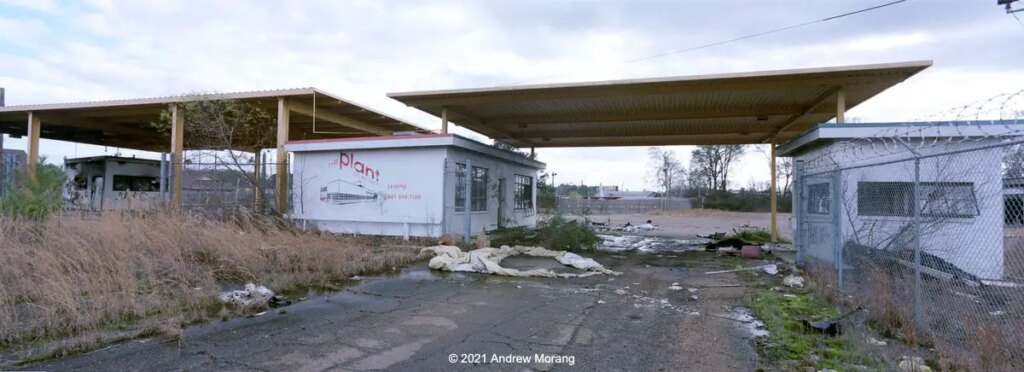
“The Plant” is the former Coca-Cola bottling factory, originally built in 1949. The complex appears to be unused, but I recently saw a new fence. Possibly it is an attempt to exclude homeless people. In 2007, the company vacated the aging facility and moved into a newer building in another part of Jackson.
Tchula
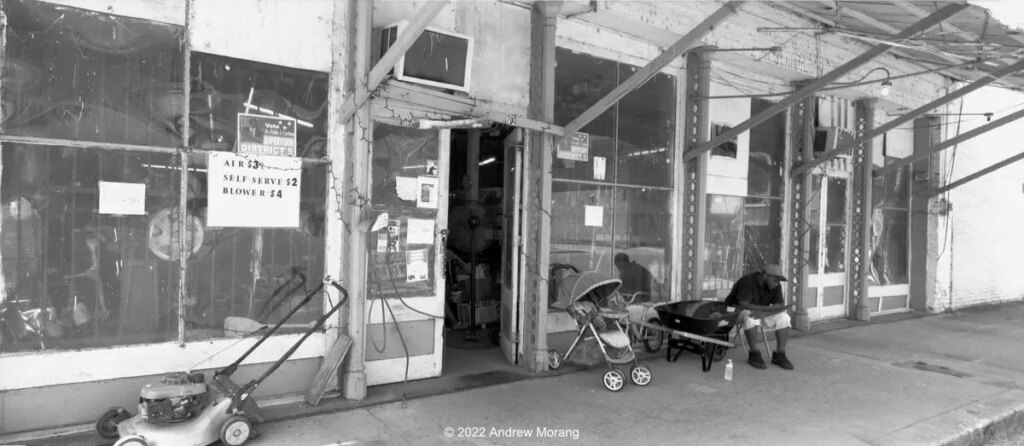
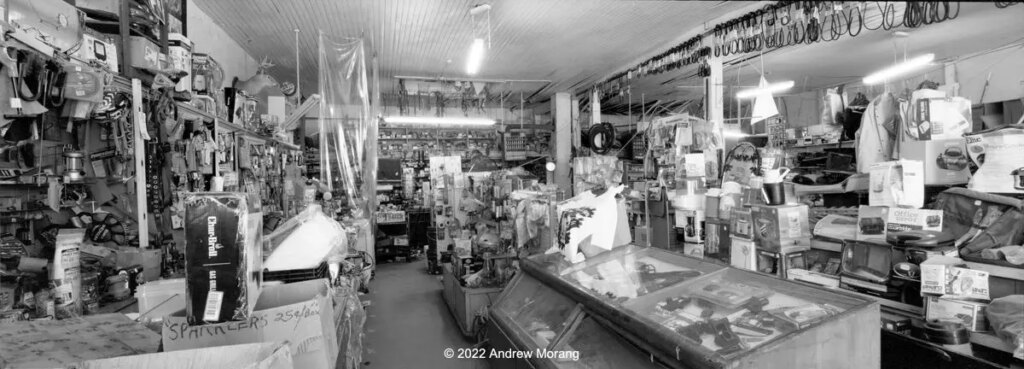
Tchula is a tiny town in Holmes County, Mississippi, on US 49E a few miles south of Itta Bena. You can read more about the town and see Tri-X photographs in my 2021 post. The Tchula Hardware Company on 201 East Main Street is like a throwback to another era – a hardware store with all the useful things you can use to fix your house, bicycle, car, flooring, or appliances. The gent siting outside graciously said I could to take pictures inside. A young lady in a couch did not pay any attention to me. I placed the XPan with the 30mm lens on a counter and set the self-timer. Using Fuji Acros film, the exposures at ƒ/11 were in the 2-4 seconds range. I may have seen this store in some movie, but my memory fails me.
Summary
Dear 35MMC Readers, this ends our short 30mm tour. For me, the Hasselblad XPan was a revelation. Through the viewfinder, I could see topics that I might have skipped with a normal camera or would have found boring without the wide frame to show the context of the scene. Yes, I could create a panorama with the overlapping 24×36 mm frames method, but I would need to visualize the scene ahead of time. With the XPan’s viewfinder, there it is; you can see what the frame will include.
Hamish Gill found that his XPan did not suit his type of photography enough to keep the valuable camera. It is a specialist tool to be sure. I am not sure if I would buy one now that any electronic glitch could render the unit unusable, but I sure enjoy using it! And it’s three specific lenses are fabulous.
Share this post:
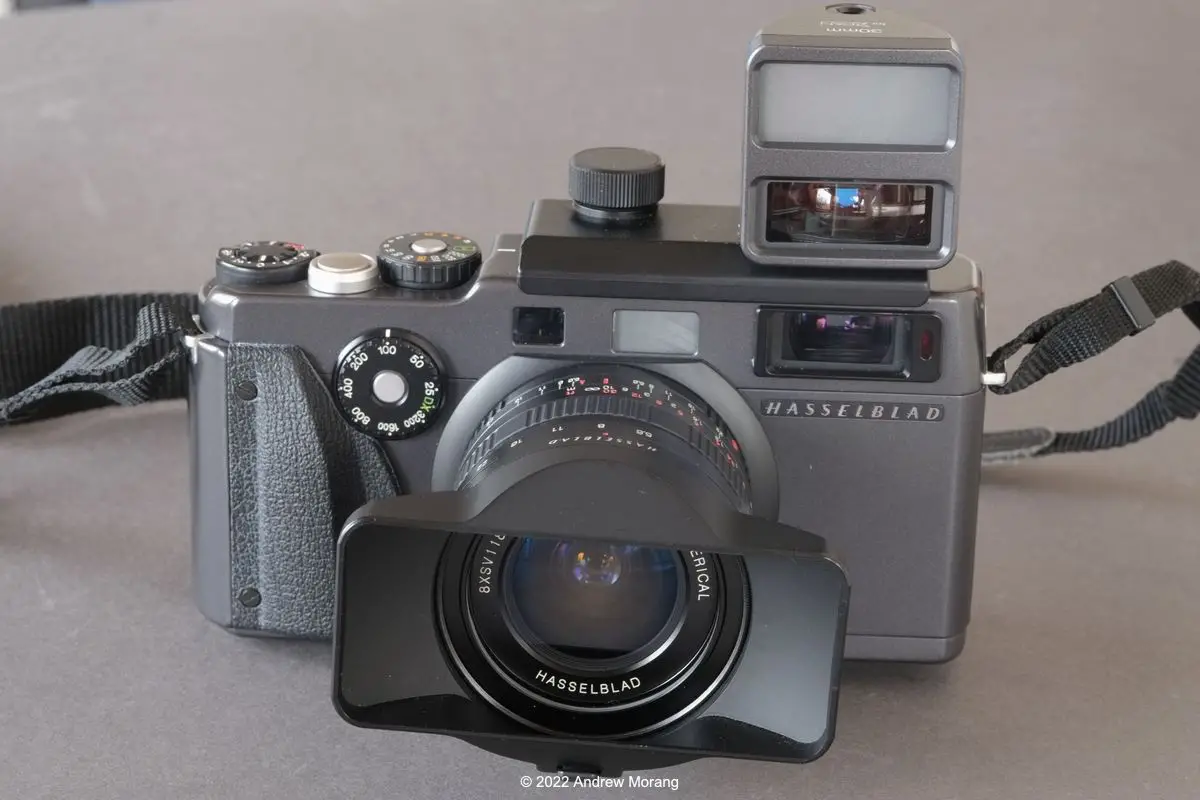








Comments
Graham Orbell on Hasselblad XPan and its Fabulous 30mm f/5.6 Lens in Mississippi – by Andrew Morang
Comment posted: 16/09/2022
Wider would often have been better. Perhaps a 35 mm lens may have been an ideal compromise. I overcame this by scanning and occasionally stitching 2 or 3 shots overlapping them vertically instead of the usual horizontal stitching. This worked extremely well creating a “taller” wide image.
I sold my X-Pan in 2016 after 18 years of use . My reasons for selling were practically identical to those that Hamish reported later. A great camera that was still valuable. It was still going fine but may have been very expensive to repair or service being quite complicated mechanically. But really I had too many cameras. I sold it for almost as many dollars as I bought it for. I know it’s not the same, quite, but with my 30mp DSLR I could use my 16 / 35 mm lens and crop to very similar panorama proportions of a 30 mm on an X-Pan with ample quality as the horizontal resolution of course stays the same. A small fault was the lens hood that wouldn’t reverse over the lens for storage. It also tended to easily fall off if it brushed against something. Once travelling around Viet Nam, in Hue, I noticed the hood was missing. A local gentleman had found it and eventually found me and kindly returned it not wanting a reward. I was sad to have sold the X-Pan but I still have negatives I’ve taken but not yet scanned..
Chip on Hasselblad XPan and its Fabulous 30mm f/5.6 Lens in Mississippi – by Andrew Morang
Comment posted: 16/09/2022
Comment posted: 16/09/2022
Comment posted: 16/09/2022
Comment posted: 16/09/2022
Dan Castelli on Hasselblad XPan and its Fabulous 30mm f/5.6 Lens in Mississippi – by Andrew Morang
Comment posted: 17/09/2022
Rasmus on Hasselblad XPan and its Fabulous 30mm f/5.6 Lens in Mississippi – by Andrew Morang
Comment posted: 18/09/2022
Comment posted: 18/09/2022
Danny on Hasselblad XPan and its Fabulous 30mm f/5.6 Lens in Mississippi – by Andrew Morang
Comment posted: 18/08/2023
skutelis35mm
Comment posted: 18/08/2023